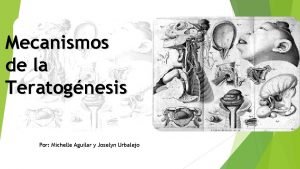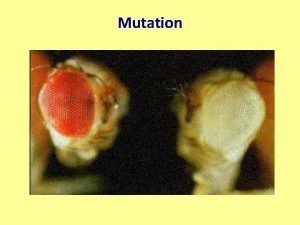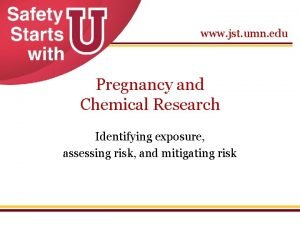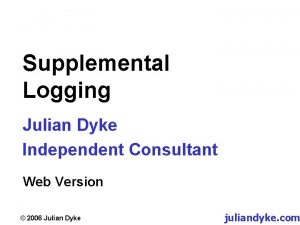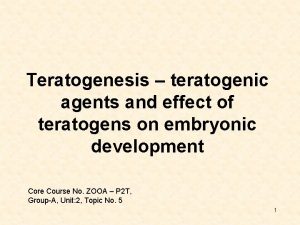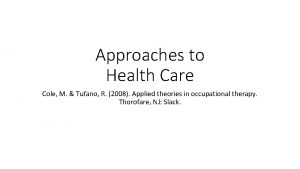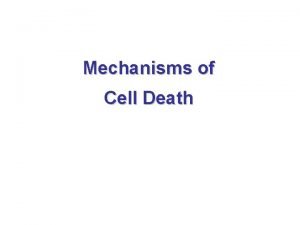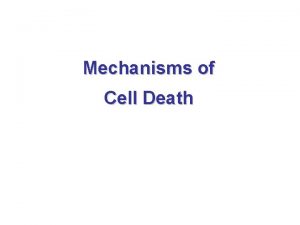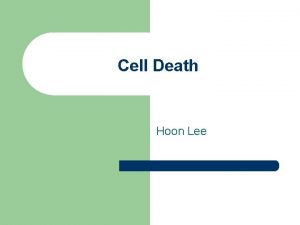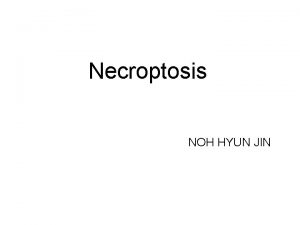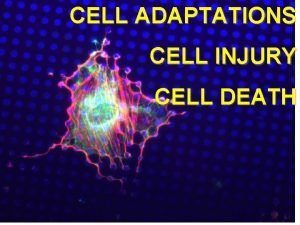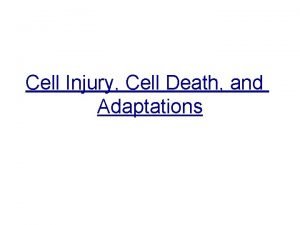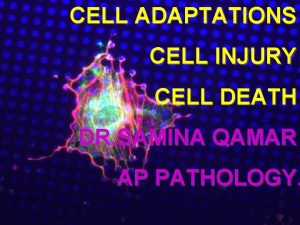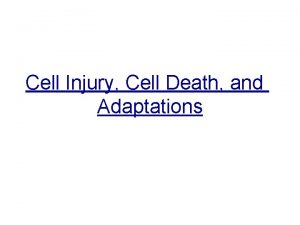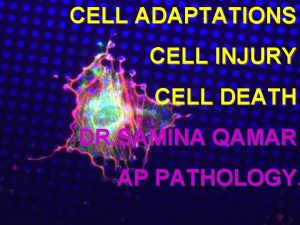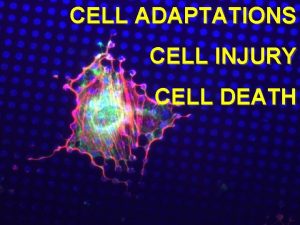TERATOGENS STEPHANIE TUFANO Teratogenesis Cell death Alter normal























- Slides: 23

TERATOGENS STEPHANIE TUFANO

Teratogenesis • Cell death • Alter normal growth • Interfere with cellular differentiation 4 -6% of birth defects • Fetal loss • Growth restriction • Birth defects • Impaired neuro system

Teratogenesis 1. Genetic susceptibility: genes determine mother and baby’s ability to metabolize teratogens 2. Dose & duration • 3. Example: binge drinking alcohol for 14 days is worse than 1 drink/day for a longer period of time Timing • Exposure in the first 10 -14 days of development – likely death • Organogenesis: fertilization to 10 weeks. All organ systems are susceptible. • Fetal period: nervous system, eyes, genitalia, hematopoietic system. More likely to have growth restriction disorder if exposed during this time.

Fetal Development

Pregnancy Categories

Psychiatric Medications – OB 101 • Cross placenta, found in amniotic fluid & breast milk • Risk of neonatal medication exposure vs. risk of untreated psych illness • • • Poor compliance with PNC Inadequate nutrition Exposure to additional meds, herbals, alcohol, tobacco, drugs Poor mother-infant bonding Family disruption • Shared decision making • Multidisciplinary • Single high dose medication > polypharm • Avoid changing medications • Prefer fewer metabolites, higher protein binding (this decreases placental passage), fewer interactions with other meds

Effects of untreated psychiatric illness

Neonatal Effects of Psychotropics • SSRI: cardiac, anencephaly, omphalocele • TCA: limited, possible limb anomalies • Atypicals (buproprion, venlafaxine, mirtazapine): limited, possible SAB • Anti-epileptics/Mood stabilizers: • Carbamazepine: facial dysmorphism, fingernail hypoplasia • Valproate: NT defects, craniofacial/limb, CV, developmental delay • Lamotrigine: no strong associations, possible cleft palate • Lithium – better safety profile • Early – Ebstein’s Anomaly • Later – hypoglycemia, diabetes insipidus, arrhythmias, floppy baby, reversible thyroid disease polyhydramnios,

Antidepressants

Anti-epileptics/Mood Stabilizers

Surveillance during treatment

Isotretinoin • Cystic Acne • Cell apoptosis • Oral: 50% SAB rate, ear anomalies, CNS malformations, hydrocephalus, cerebellum abnormalities, severe intellectual disability, seizures, optic nerve/retinal abnormalities, conotruncal heart defects, thymic defects, and dysmorphic features (cleft palate, microcephaly, micrognathia) • Pregnancy Prevention Program/i. PLEDGE: contracts between patient & provider that pledge patient’s willingness to take monthly birth control & use 2 forms of birth control • Topical: no significant associations, but use as prescribed

Antibiotics 1. Tetracycline • FDA class D • Calcification • Discoloration of “baby” teeth. No change to permanent teeth. • Reduced bone growth during exposure. Reversible after d/c. 2. Quinolones • FDA class C • Historically associated with arthropathy & interference with development of cartilage – only been shown in animals • Highly unlikely, but insufficient data to say “no risk”

Angiotensin Converting Enzyme Inhibitor (ACE-I) / Angiotensin II Receptor Blocker (ARB) 1. First Trimester – weak evidence • Congenital cardiac (septal defects, PDA), CNS malformations 2. Second/Third Trimester • Growth restriction • Oligo – pulmonary hypoplasia, RDS, skeletal deformations • Anuria – renal failure due to tubular dysgenesis 3. Long Term – renal effects can be reversible, but some studies have shown CKD requiring long term dialysis

RAAS Refresher

ACE-I/ARB • Hypothesized pathogenesis 1. 2. 3. Fetus has relatively low perfusion pressures -> blocked angio II by ACE-I/ARB -> decreased GFR -> oligo/anuria Angio II block -> no feedback to release vasodilatory prostaglandins -> decreased uteroplacental flow -> growth restriction Angio II has role in fetal growth esp. of fetal kidney

Alcohol • There is no “safe” amount • Equally susceptible in all trimesters 1. 1 st tri: facial/major structural anomalies 2. 2 nd tri: SAB 3. 3 rd tri: low birth weight • Fetal Alcohol Spectrum Disorder (FASD): facial features + CNS abnormalities + growth retardation • Fetal alcohol syndrome (FAS) • Partial fetal alcohol syndrome (p. FAS) • Alcohol-related neurodevelopmental disorder (ARND) • Neurobehavioral disorder associated with prenatal alcohol exposure (ND- PAE) • Alcohol-related birth defects (ARBD)

FAS Characteristic Facial Features

Tobacco • No significant increase in structural congenital anomalies. • Possible link to cleft palate, anal atresia, cardiac defects, limb defects • Pregnancy: preterm labor, placental abruption, fetal demise, growth restriction, pre-eclampsia • Long Term: SIDS, T 2 DM, pulmonary function, cognitive function, behavioral problems, schizophrenia

Illicit Drugs Heroin • Congenital anomalies risk similar to general population. 1. • Associated factors are threat: infection, high risk behaviors, mental illness, exposure to violence, poor prenatal care • Pregnancy: preterm labor, placental abruption, fetal demise, growth restriction, meconium, NAS • Methadone/suboxone advantages: oral administration, known dose and purity, safe and steady availability, improved maternal/fetal/neonatal outcomes Cocaine • Pregnancy: vasoconstrictive effects 2. • SAB, fetal demise, abruption, growth restriction, preterm labor • Mimics pre-eclampsia, but DO NOT give labetalol • Long term effects: limited due to confounders • Behavioral, language, memory, attention, executive function, processing

Conclusions • Definitive data can be sparse, but neonatal outcomes described are impacting enough to place significant thought into the use of these substances • Risk vs. benefit • Multidisciplinary approach • Importance of proper surveillance

Teratogen Reference Databases • Organization of Teratology Information Specialists (OTIS) • Teratogen Information System (TERIS) • Mother to Baby

References • https: //www. acog. org/Clinical-Guidance-and-Publications/Practice-Bulletins/Committee-on-Practice-Bulletins- Obstetrics/Use-of-Psychiatric-Medications-During-Pregnancy-and-Lactation#table 2 • https: //www. acog. org/Clinical-Guidance-and-Publications/Committee-Opinions/Committee-on-Obstetric- Practice/Opioid-Use-and-Opioid-Use-Disorder-in-Pregnancy • https: //www. uptodate. com/contents/fetal-alcohol-spectrum-disorder-clinical-features-and- diagnosis? topic. Ref=4798&source=related_link#H 191778440 • https: //www. ncbi. nlm. nih. gov/pmc/articles/PMC 2835909/ • https: //www. fda. gov/drugs/emergencypreparedness/bioterrorismanddrugpreparedness/ucm 130712. htm • https: //www. uptodate. com/contents/substance-use-by-pregnant- women? search=cocaine%20 pregnancy&source=search_result&selected. Title=1~150&usage_type=default&disp lay_rank=1#H 18 • https: //www. uptodate. com/contents/cigarette-and-tobacco-products-in-pregnancy-impact-on-pregnancy-and- theneonate? section. Name=ADVERSE%20 OUTCOMES&topic. Ref=5010&anchor=H 7&source=see_link#H 383471023 9 • https: //www. uptodate. com/contents/adverse-effects-of-angiotensin-converting-enzyme-inhibitors-and- receptor-blockers-in-pregnancy? topic. Ref=110900&source=related_link#H 6 • https: //mothertobaby. org/fact-sheets-parent/
 Teratogenos
Teratogenos Mutation means
Mutation means Jst umn
Jst umn Fetal hydantoin syndrome
Fetal hydantoin syndrome What is habituation
What is habituation Teratogens
Teratogens Somatic death vs molecular death
Somatic death vs molecular death Drop supplemental log group
Drop supplemental log group Ddl create alter drop
Ddl create alter drop Tempore crevit amor
Tempore crevit amor Bauwagen einrichten ideen
Bauwagen einrichten ideen Heinz erhardt gedichte
Heinz erhardt gedichte Ich komme jetzt
Ich komme jetzt çağatay ulusoy alter
çağatay ulusoy alter Christa preissing lebenslauf
Christa preissing lebenslauf Altered cast technique impression
Altered cast technique impression Alter introduction template
Alter introduction template Drugs that alter moods thoughts and sense perceptions
Drugs that alter moods thoughts and sense perceptions Afshaan alter
Afshaan alter Hanging valley glacier
Hanging valley glacier Figurenkonstellation steppenwolf
Figurenkonstellation steppenwolf Ein alter mann ist kein d-zug
Ein alter mann ist kein d-zug Alter ego self portrait
Alter ego self portrait Alter ego trust
Alter ego trust
